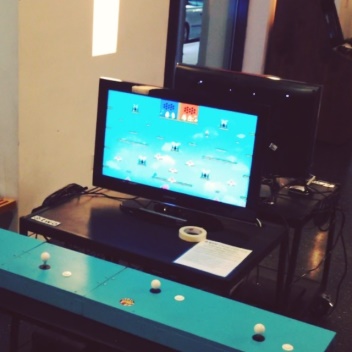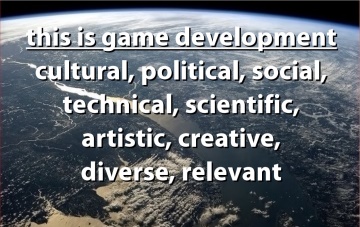PRACTICE Makes Better: Self-Improvement Through Game Design

“How do you let people betray each other?”
“How do you handle gay marriage?”
“How do you get people to want to play?”
No, the above aren’t results from a Google auto-complete gone wrong. These were just a few of the questions posed at the Open Problems session at PRACTICE: Game Design in Detail, the NYU Game Center’s annual game design conference held last week. Now in its third year, the weekend conference brings together game designers working in digital games, analog games, and other disciplines of design for a series of in-depth discussions about game design.
Despite talks by name-brand designers like Warren Spector, Michael Brough and Sean Vanaman on emergent narrative, designing experimental games and postmortems on past successes, it was the Open Problems session that truly made the event special.

At Open Problems, designers bring design issues they’re wrestling with to the assembled brain trust for on-the-spot input, and it was at this year’s session that I realized a core truth: Much more so than other mediums, the practice of game design is about relentless, accelerated self-improvement.
Where the writer might have an editor or a group of readers, the sculptor might show works-in-progress to a select few, and the filmmaker might screen a rough cut for production staff, the game designer aims to get a project in front of as many people as possible as soon as possible to test his or her assumptions against reality.
Less subjective than most authored media, the interactive nature of games helps illustrate objective truths through testing.
For example: If players keep running by the exit door and missing it, it’s highly likely that you need to make a change to make the door stand out more.
Only by embracing these truths and changing, bit by bit, can a game improve enough to fulfill its intended function better than it did before.
The Truths Are Out There
Of course, the search for ways to improve the self-improvement process is not limited to game design and development. The opening talk of the conference, “B-boy Jams: The History and Organization of Breakdance Competitions,” gave attendees a crash course in the history of Hip Hop with regard to breakdancing as well as a new lens through which to consider issues of design.
Yes, the struggling NYC breakdance scene is kind of similar to the equally-small competitive fighting game circuit, as one attendee pointed out. Yes, rule variants for breakdance battles inherently involve aspects of design that aren’t common to video games – like the skill of the contenders, the high level of braggadocious posturing inherent to the activity and the need to keep spectators entertained.

Yes, the design of the events themselves may be a way to enable faster growth for the breakdancing scene – and yes, this would be game design at work.
At the conference’s closing session, involving a – you guessed it – group feedback dialog on what attendees liked, didn’t like, and would like to see next year, there was a clear push for more outside perspectives.
The crowd called for theatrical designers, breakdancers, urban planners, industrial designers and more voices outside traditional game design to share their experiences. Of how they can touch people in their own disciplines, even if they share little in common with traditional games.
The suggestions went on and on. As if by unspoken consensus, the group made it clear: they were hungry for more perspectives than what games themselves had to offer. Hungry to become more informed in what the world had for them.
“Theme park designer,” someone said. “Playground designer,” someone else said.
How many more occupations could we name? How many other perspectives would we want to hear from?
It was almost as if the search for self-improvement, itself, had become a game.
